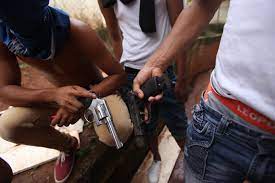The anatomy of Panama’s 159 gangs

There are 159 gangs operating throughout Panama, according to reports from the Ministry of Security (Minseg). They are concentrated in Panama (90), Colón (33) and Chiriquí (19).
Data from the Anti-Gang Unit of the National Police (PN) indicates that in Colón two of the main groups dedicated to international drug trafficking control the rest, that is, they have 31 criminal cells under their command.
While in West Panama, where four gangs are registered, the scheme changed. The deputy commissioner of the PN Police Investigation Directorate, Raúl Julio, told La Prensa that with the massacre in La Joyita prison on December 17, 2019 —which left 13 dead— the gangs were divided. This, in turn, led to a string of crimes. According to the Homicide and Femicide Prosecutor’s Office, in that region, 22 homicides —of 80 committed in the province— are related to La Joyita.
“These individuals know the modus vivendi of their partners, they know their relatives,” he says. For this reason, Julio adds, most of the violent acts occurred in the residences of the members of antagonistic criminal groups.
The gangs seek the union or alliance of small criminal groups in each of the neighborhoods that they finance and use to commit high-impact crimes, such as homicides, robberies, extortion, and the distribution and sale of drugs.
Cycle of violence
The authorities often arrest and sentence them, but others reappear, and even co-participate in crimes from prison.
Throughout 2020, the Specialized Prosecutor for Crimes of Illicit Association (gang), led by Nahaniel Murgas, participated in 416 hearings, achieving 135 convictions: 29 of those convicted belonged to a gang from Curundú, 20 to one from Colón, and another 20 one from Vera Cruz. The rest relate to cases from across the country. In some, the sentences involved 128 months in prison.
For the sociologist, Gilberto Toro, thefts and robberies express two types of criminal culture. The first is made up of amateur or young criminals and the second is made up of criminals who do not hesitate to commit acts of violence, including murder and kidnapping, in order to achieve their goals.
Thus, theft can be described, according to Toro, as a “crime school” that spins the wheel and perpetuates the cycle of criminal activity.
Toro affirms that this is often preceded by homes in which domestic violence prevails, which cultivates and forms individuals who normalize violence.





